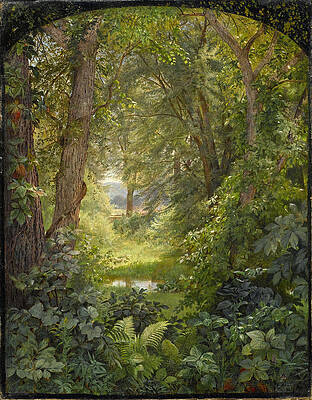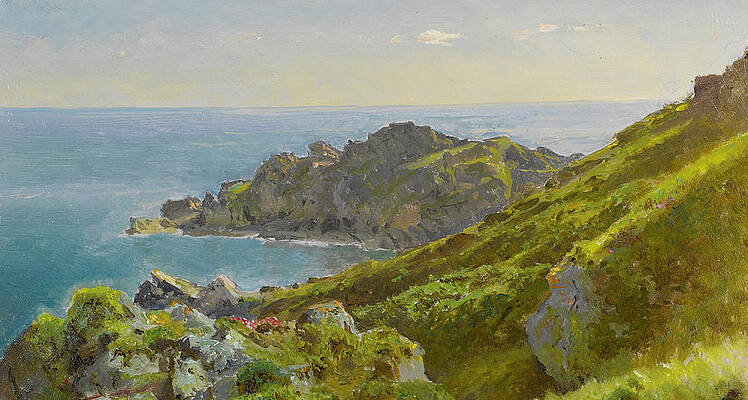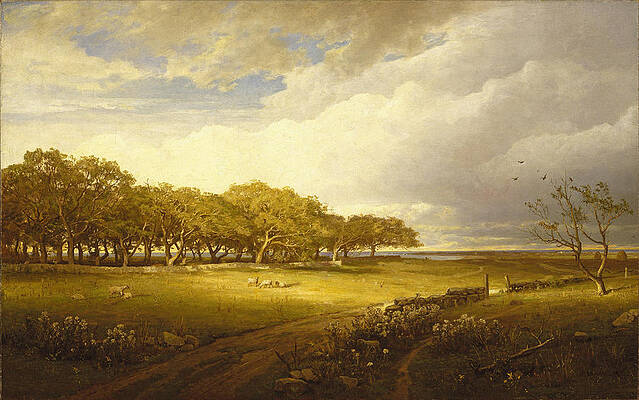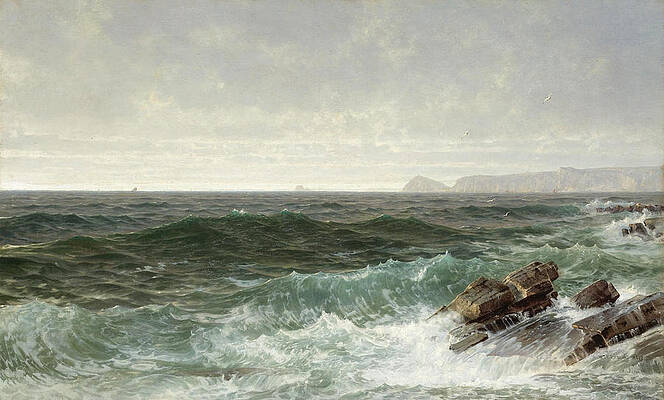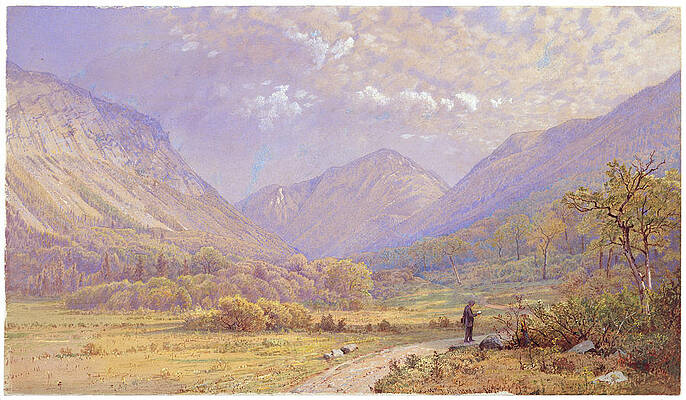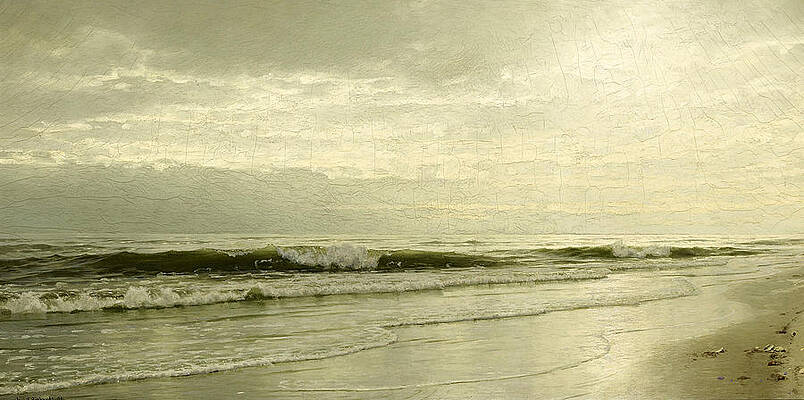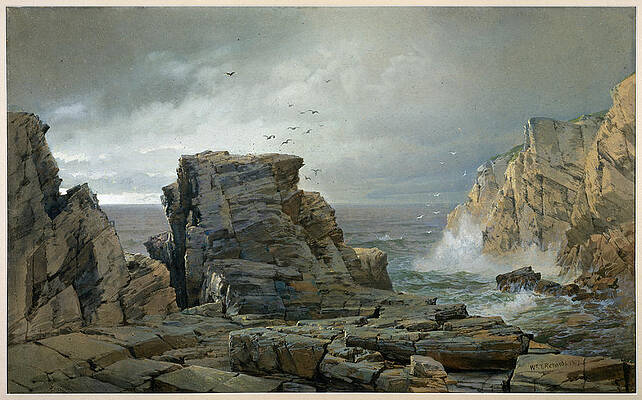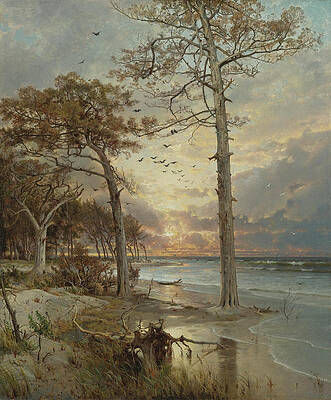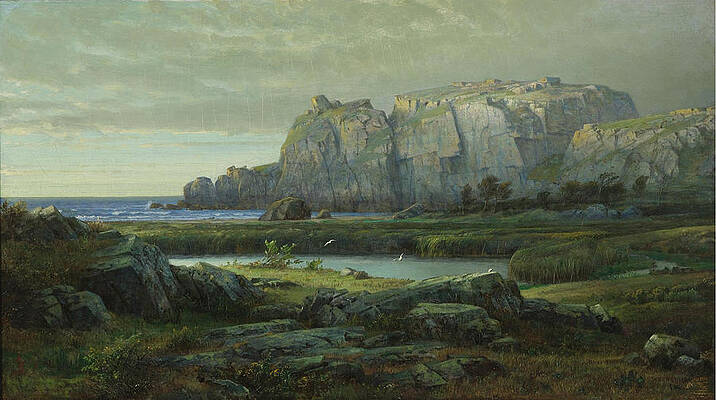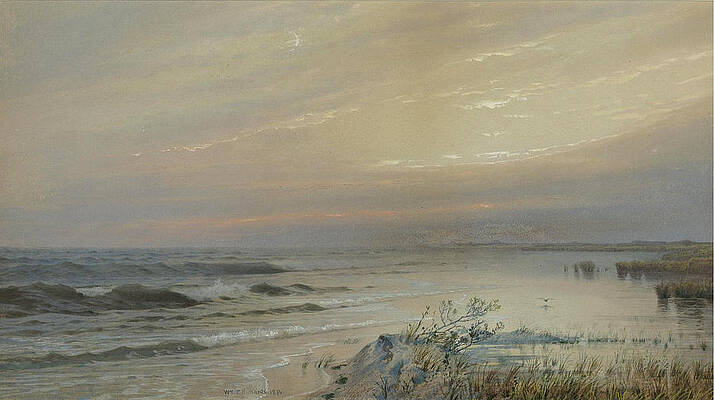William Trost Richards
Paintings
View of the Artist's Home. Graycliff. Newport. Rhode Island
Woodland Landscape
Graycliff the Artists Home Newport Rhode Island
Coastline with Grassy Slope
Rocky Cliff with Stormy Sea. Cornwall
Old Orchard at Newport
Summer Landscape
Seascape
A Peaceful Morning
Coastal Scene
Along the Coast
Cormorant Cliff, Jamestown, Rhode Island
On the Brandywine
The Frozen Lake
Franconia Notch, New Hampshire
Sunlit Coast
Ebbing tide
A Rocky Coast
At Atlantic City
Lago Avernus
Wooden Bridge at Sunset
Blue Waters
South Jersey Coastal Scene
Point Judith
British Coastal View. Coast of Cornwall

Woodland Landscape (Woodland Glade)


Fine Art Prints | Greeting Cards | Phone Cases | Lifestyle | Face Masks | Men's , Women' Apparel | Home Decor | jigsaw puzzles | Notebooks | Tapestries | ...
A Peaceful Morning
William Trost Richards (June 3, 1833 - April 17, 1905) was an American landscape artist associated with both the Hudson River School and the American Pre-Raphaelite movement.[1]
Biography
William Trost Richards was born on 3 June 1833 in Philadelphia.[2] In 1846 and 1847 he attended the local Central High School. Between 1850 and 1855 he studied part-time with the German artist Paul Weber while working as designer and illustrator of ornamental metalwork. Richards first public showing was part of an exhibition in New Bedford, Massachusetts, organized by artist Albert Bierstadt in 1858.[3]
In 1862 he was elected honorary member of the National Academy of Design and Academician in 1871. In 1863, he became a member of the Association of the Advanced of Truth in Art, an American Pre-Raphaelite group. In 1866, he departed for Europe for one year. Upon his return and for the following six years he spent the summers on the East Coast.
In the 1870s, he produced many acclaimed watercolor views of the White Mountains, several of which are now in the collection of the Metropolitan Museum of Art. Richards exhibited at the National Academy of Design from 1861 to 1899,[4] and at the Brooklyn Art Association from 1863 to 1885. He was elected a full member of the National Academy in 1871.
Richards rejected the romanticized and stylized approach of other Hudson River painters and instead insisted on meticulous factual renderings. His views of the White Mountains are almost photographic in their realism. In later years, Richards painted almost exclusively marine watercolors.
His works are featured today in many important American museums, including the National Gallery, the Saint Louis Art Museum, the Smithsonian American Art Museum, the Wadsworth Atheneum, the Philadelphia Museum of Art, the Yale University Art Gallery, the High Museum of Art, the Museum of Fine Arts, Boston, the Fogg Art Museum, the Brooklyn Museum of Art the Thyssen-Bornemisza Museum and Crystal Bridges Museum of American Art.
His daughter Anna Richards Brewster also became a painter.
References
"U.S. Department of State - Art in Embassies".
http://williamtrostrichards.com/showexhibit.asp?ID=1
"William Trost Richards - The complete works".
"William Trost Richards Biography".
Further reading
Ferber, Linda S., In search of a national landscape : William Trost Richards and the artists' Adirondacks, 1850-1870, Blue Mountain Lake, N.Y., Adirondack Museum, 2002.
Ferber, Linda S., Never at fault, the drawings of William Trost Richards, Yonkers, N.Y., Hudson River Museum, 1986.
----
Fine Art Prints | Greeting Cards | Phone Cases | Lifestyle | Face Masks | Men's , Women' Apparel | Home Decor ...
----
Artist
A - B - C - D - E - F - G - H - I - J - K - L - M -
N - O - P - Q - R - S - T - U - V - W - X - Y - Z
Retrieved from "http://en.wikipedia.org/"
All text is available under the terms of the GNU Free Documentation License





